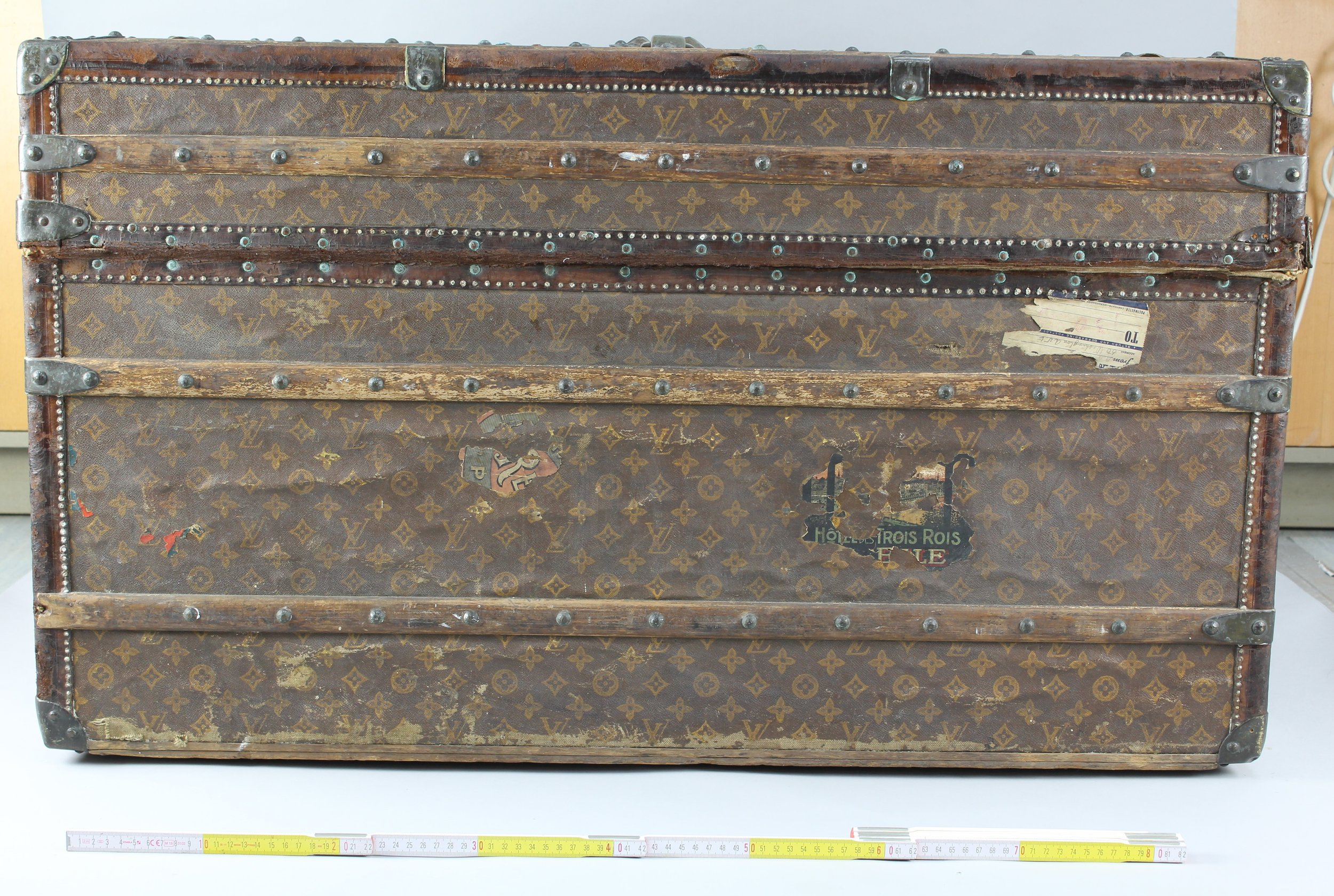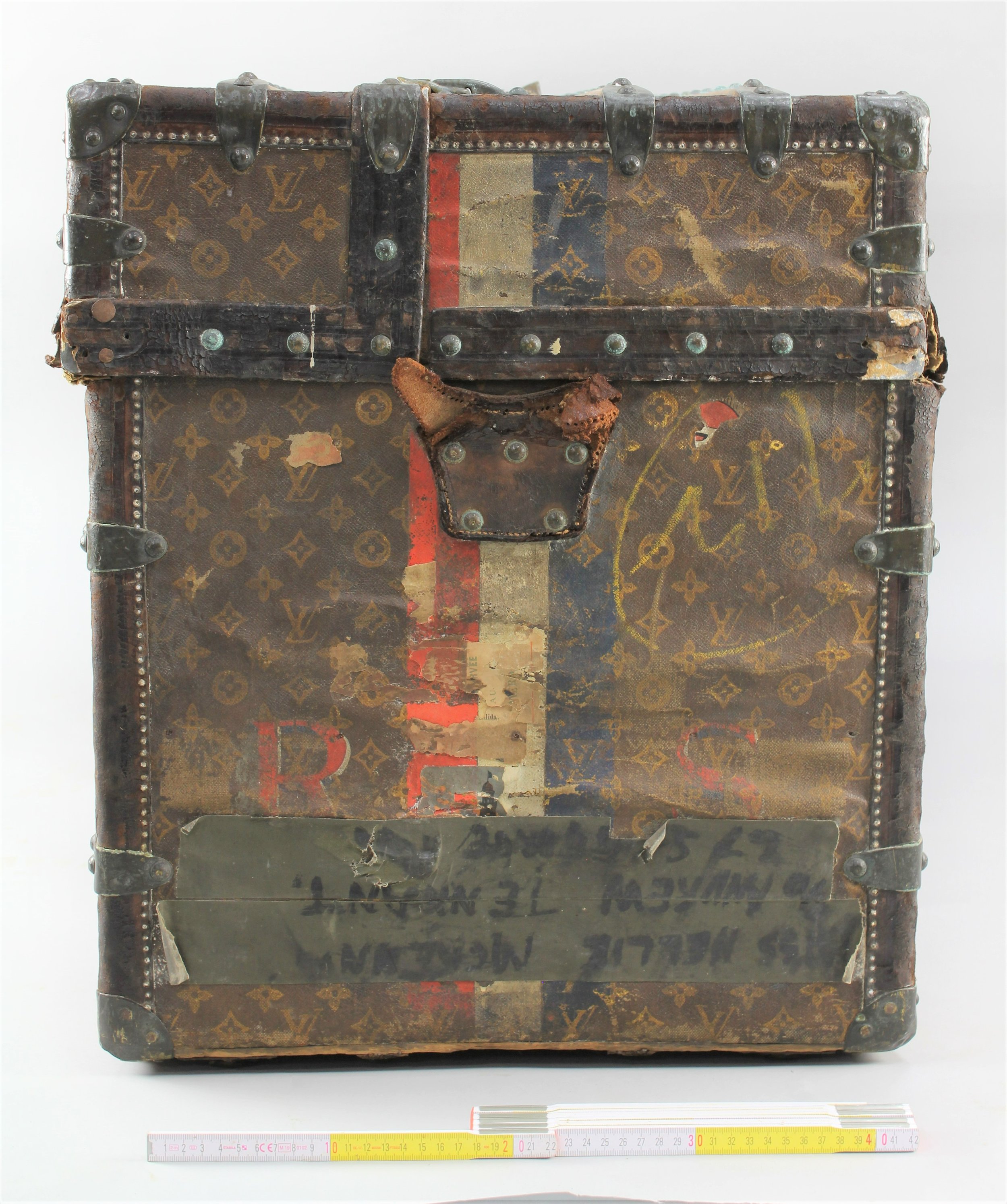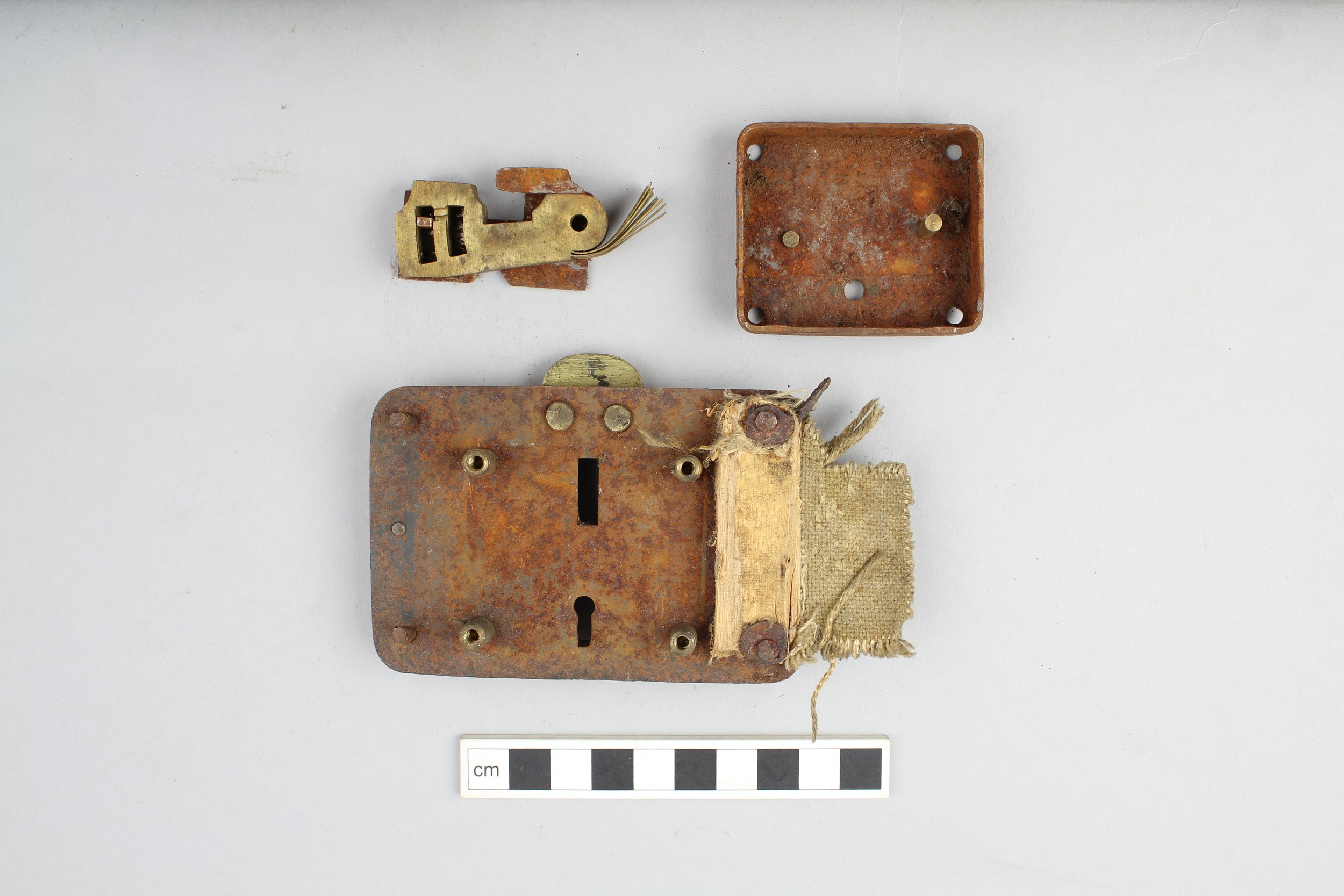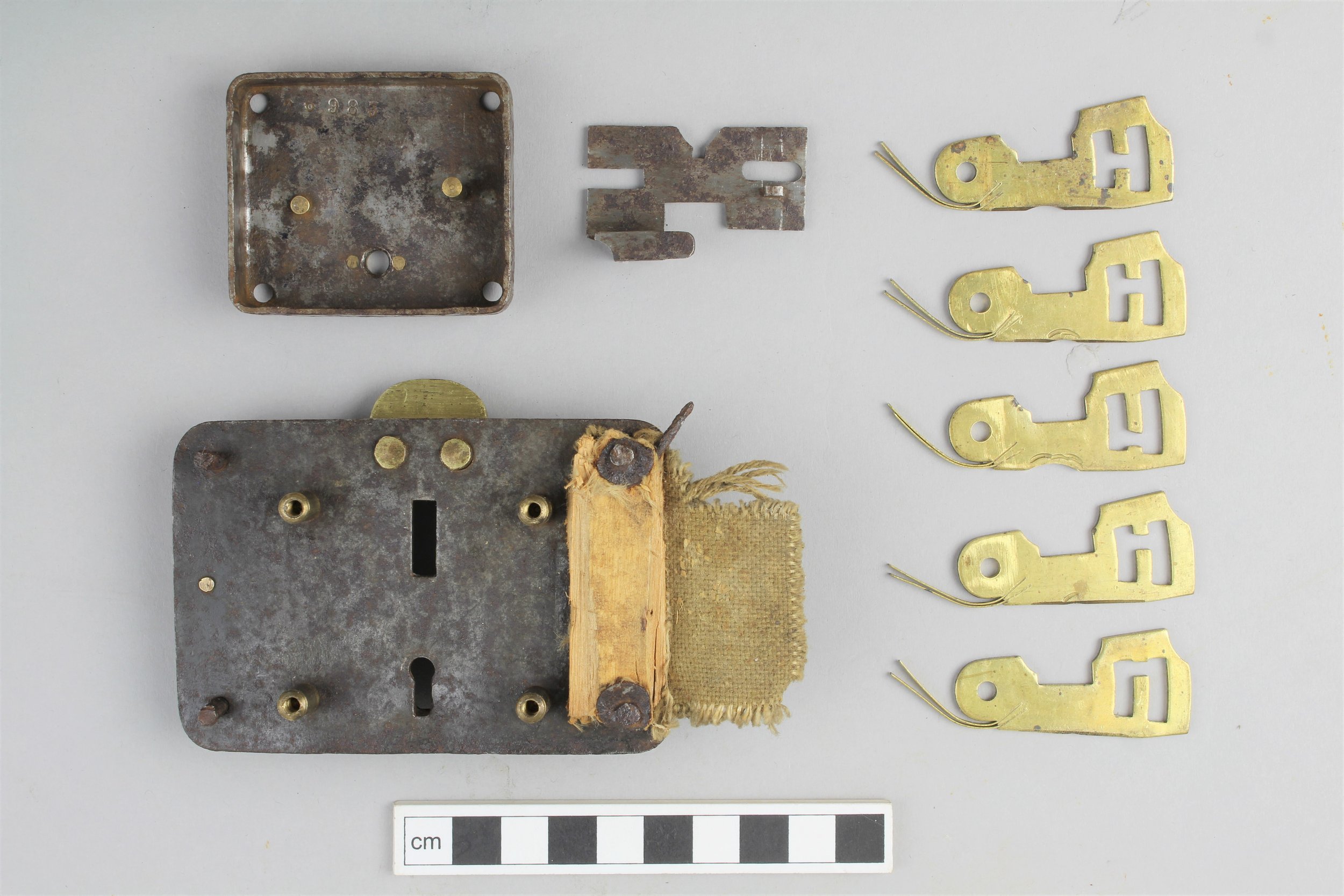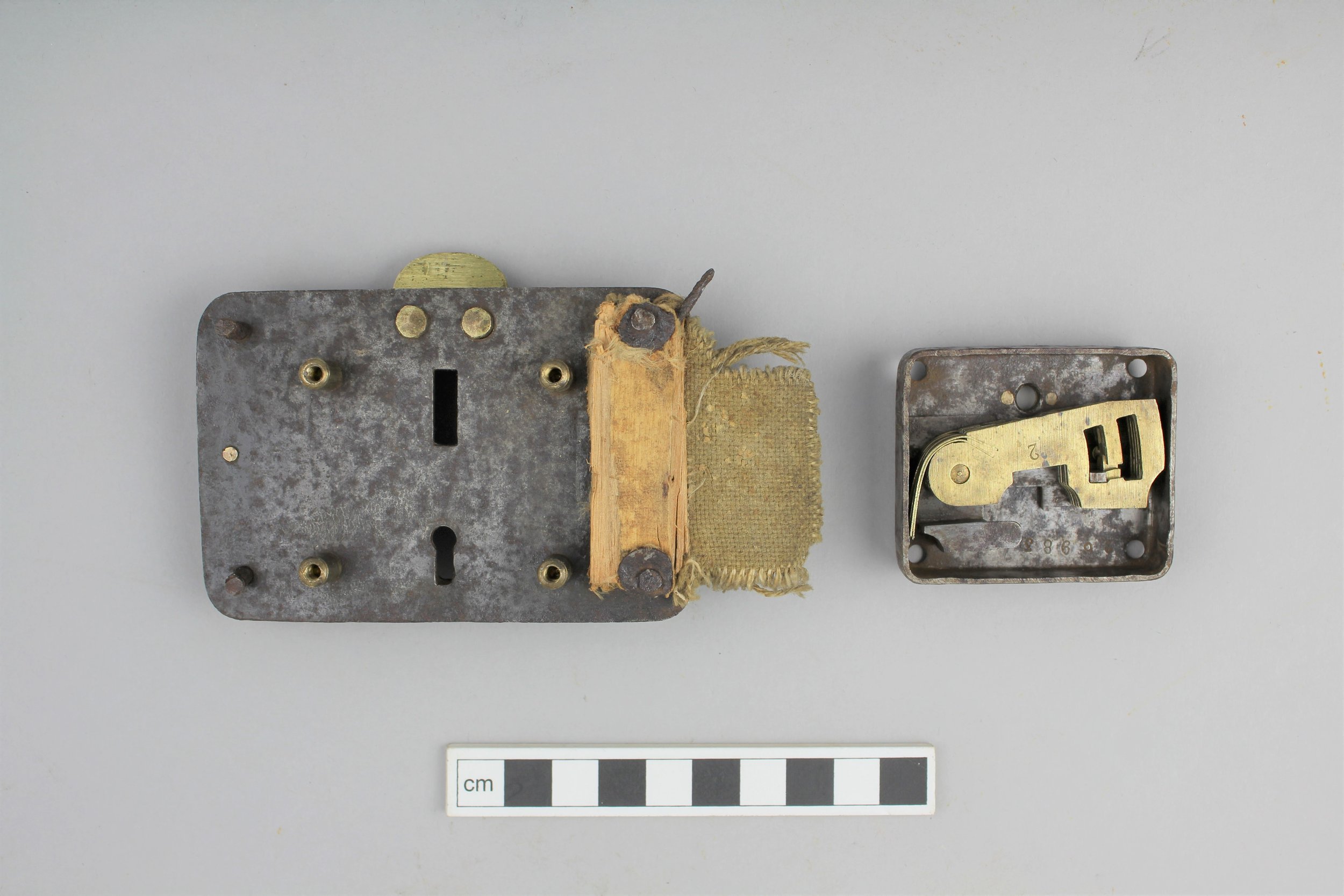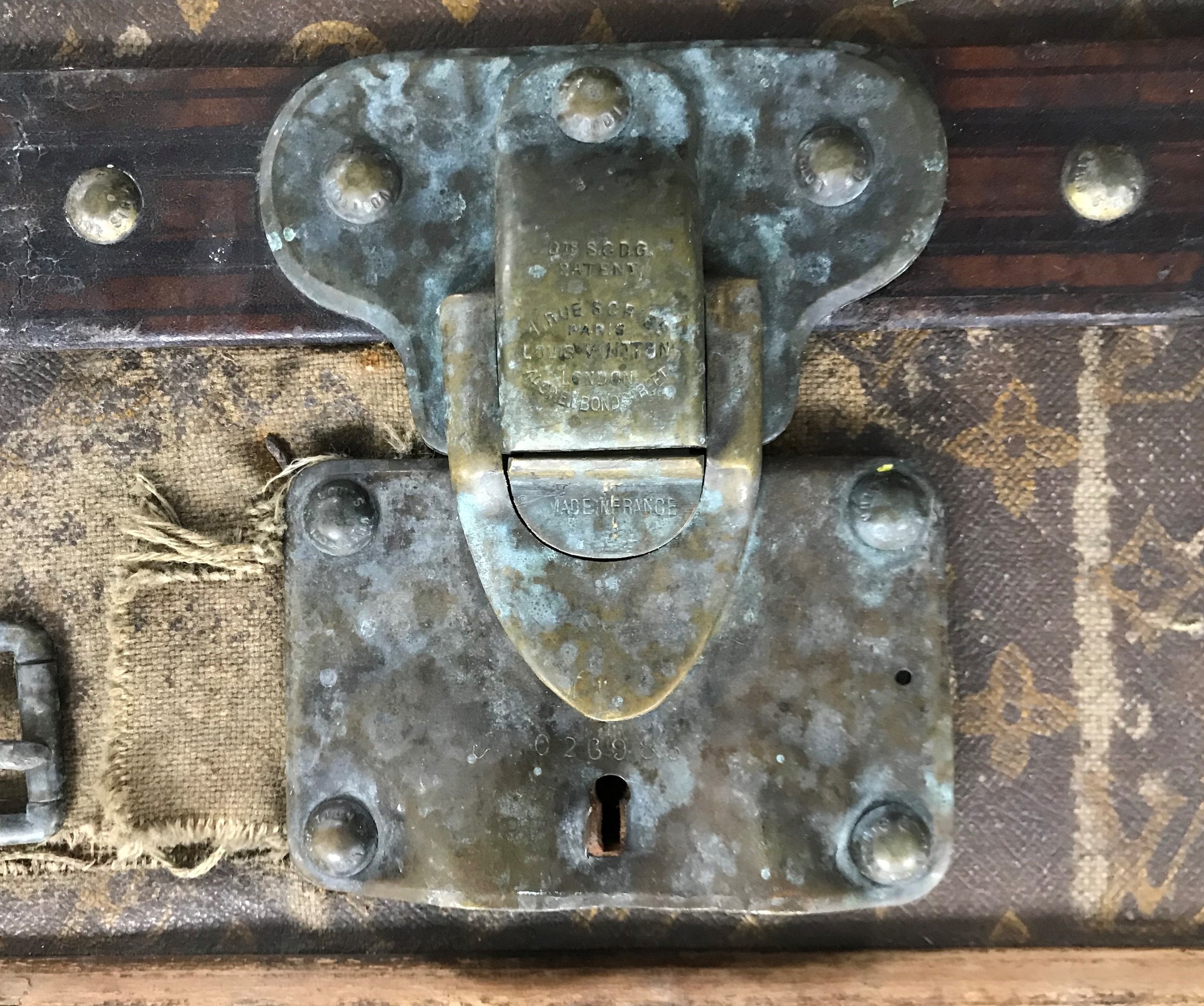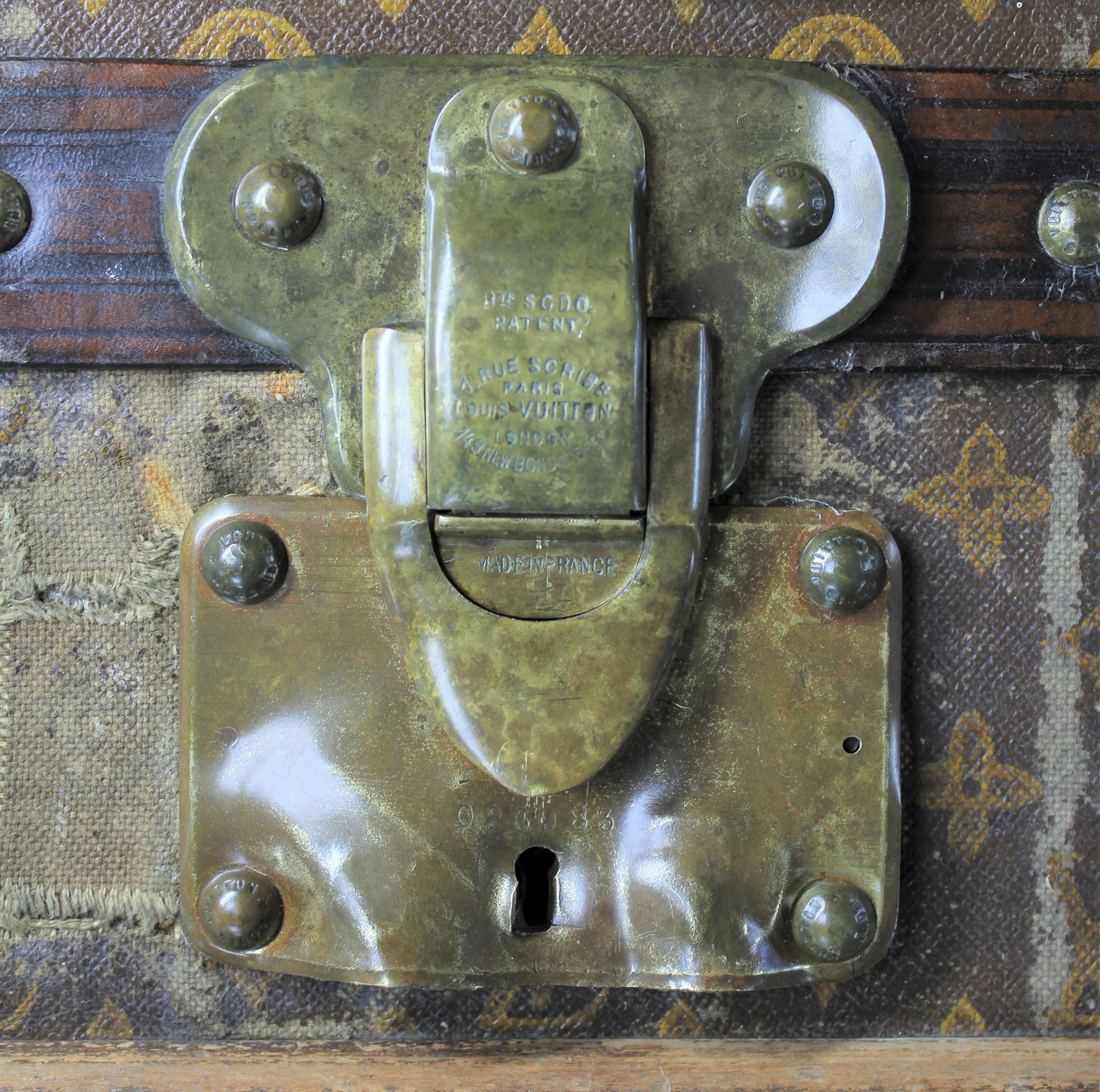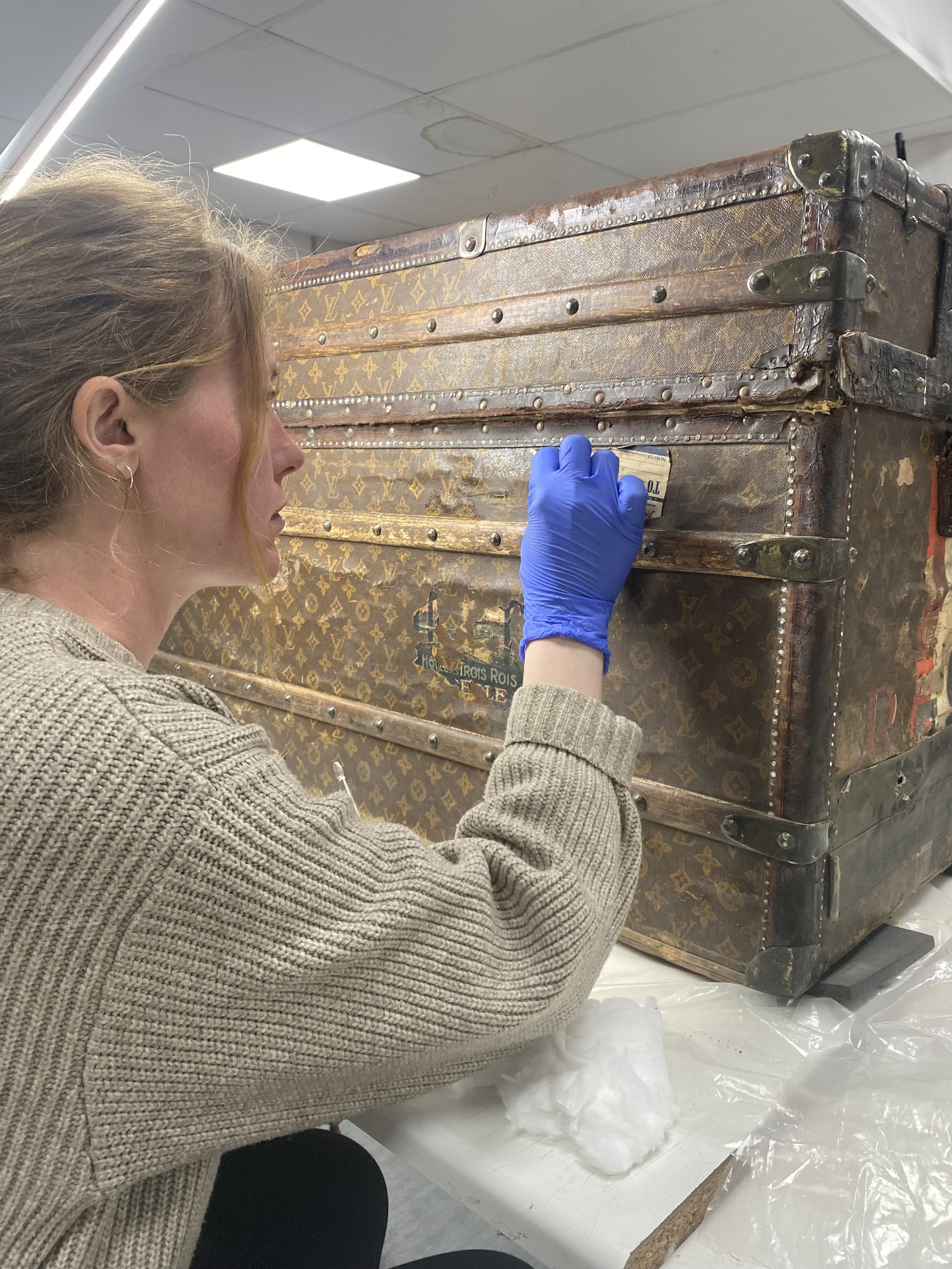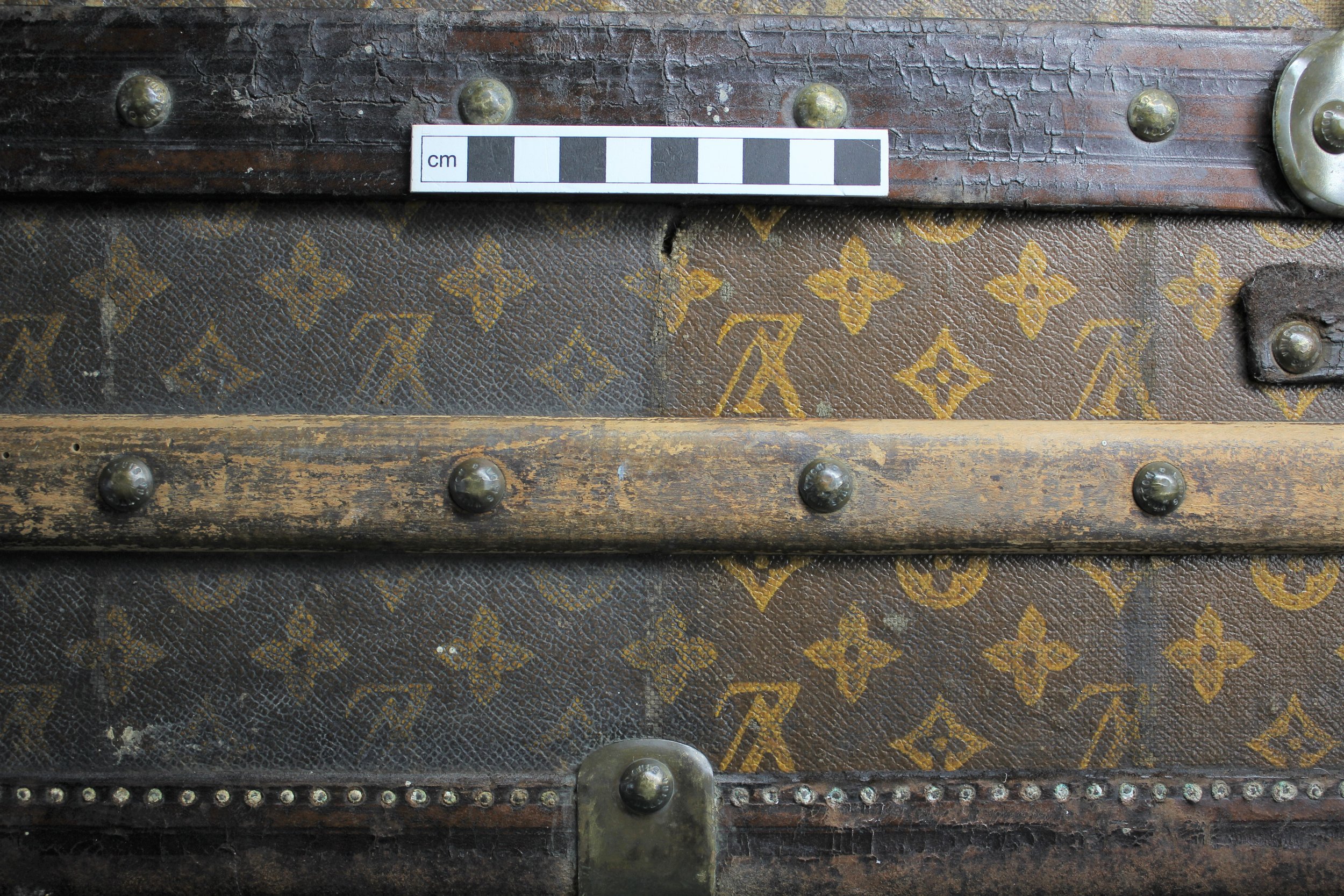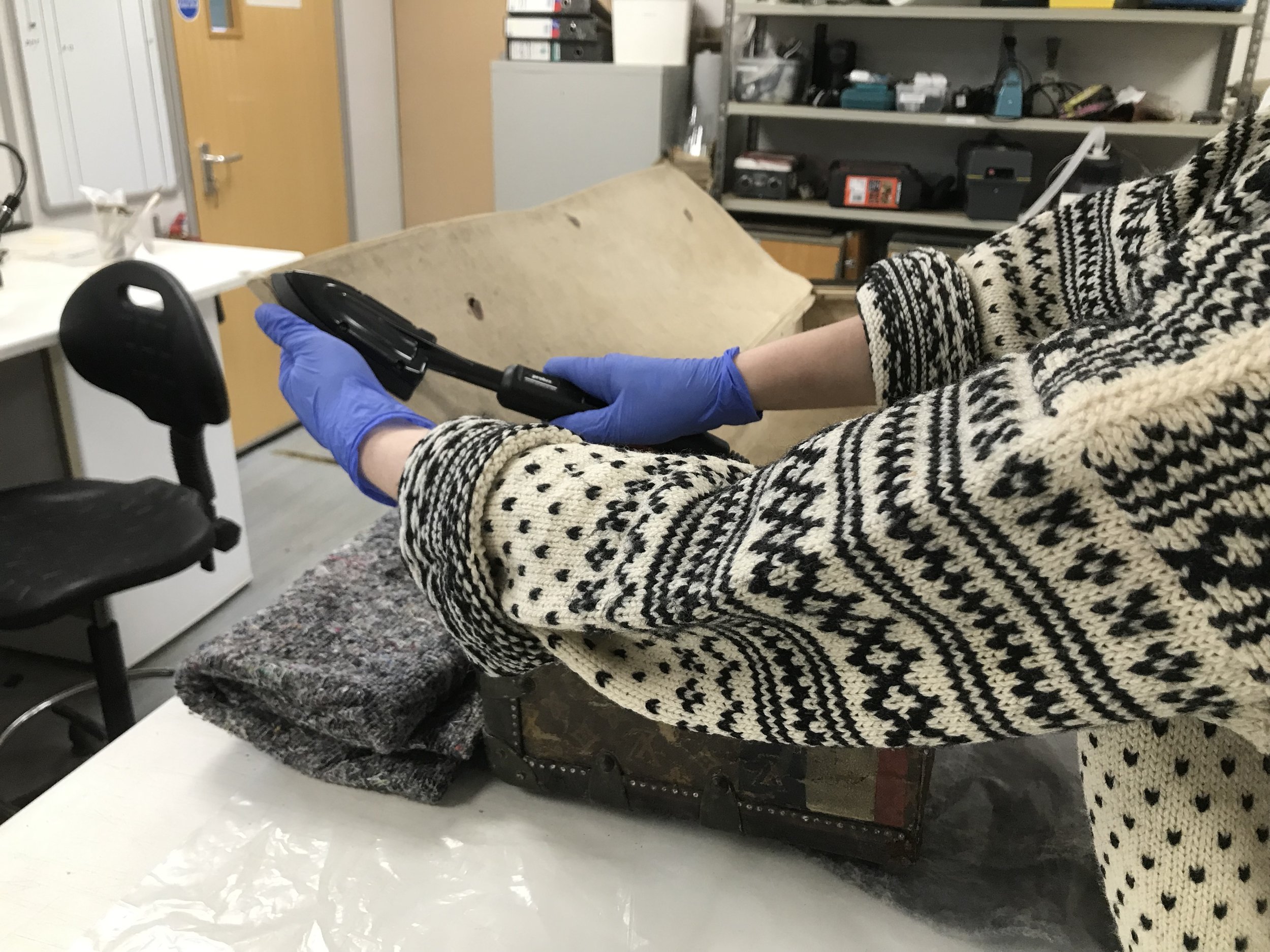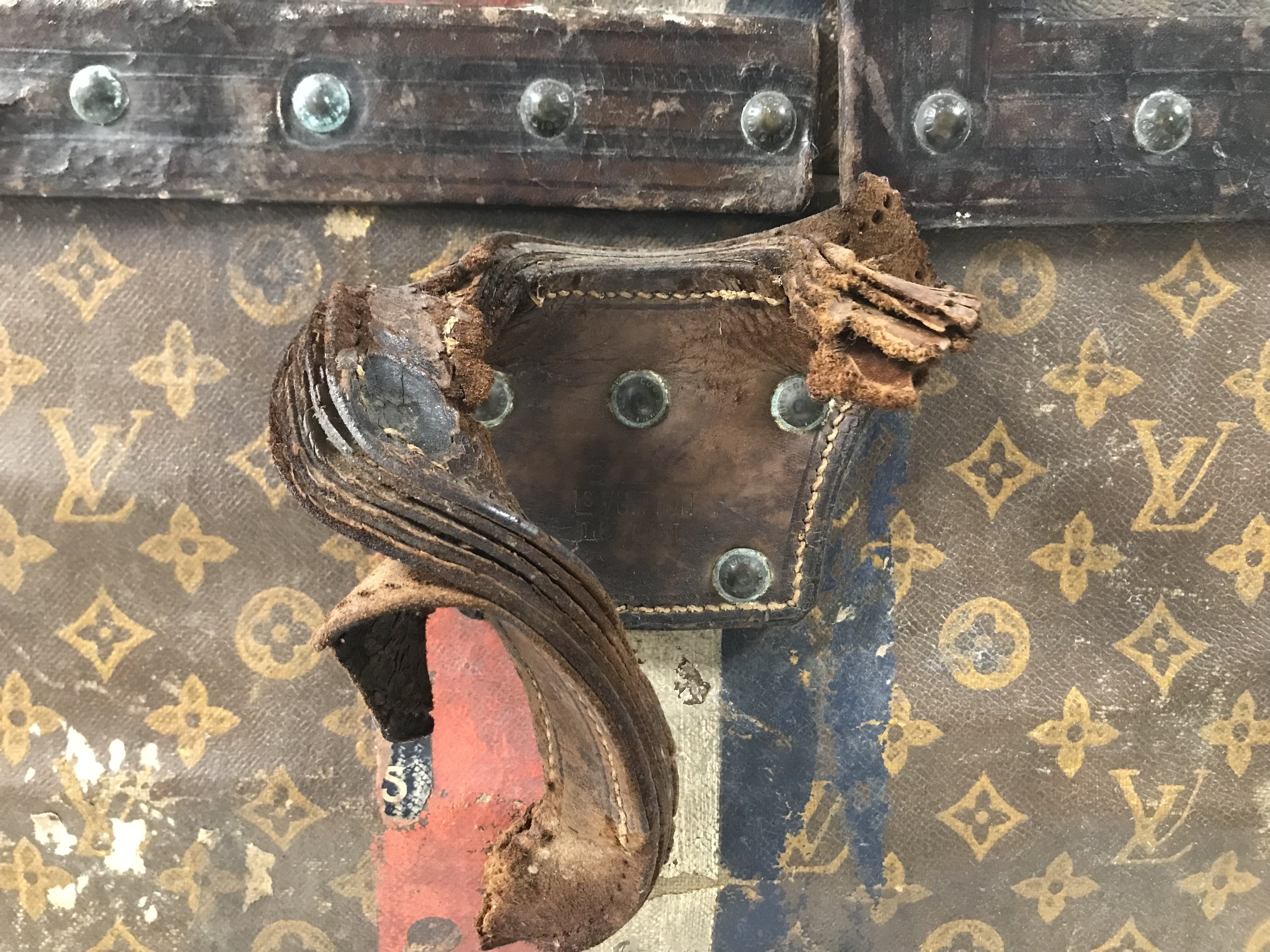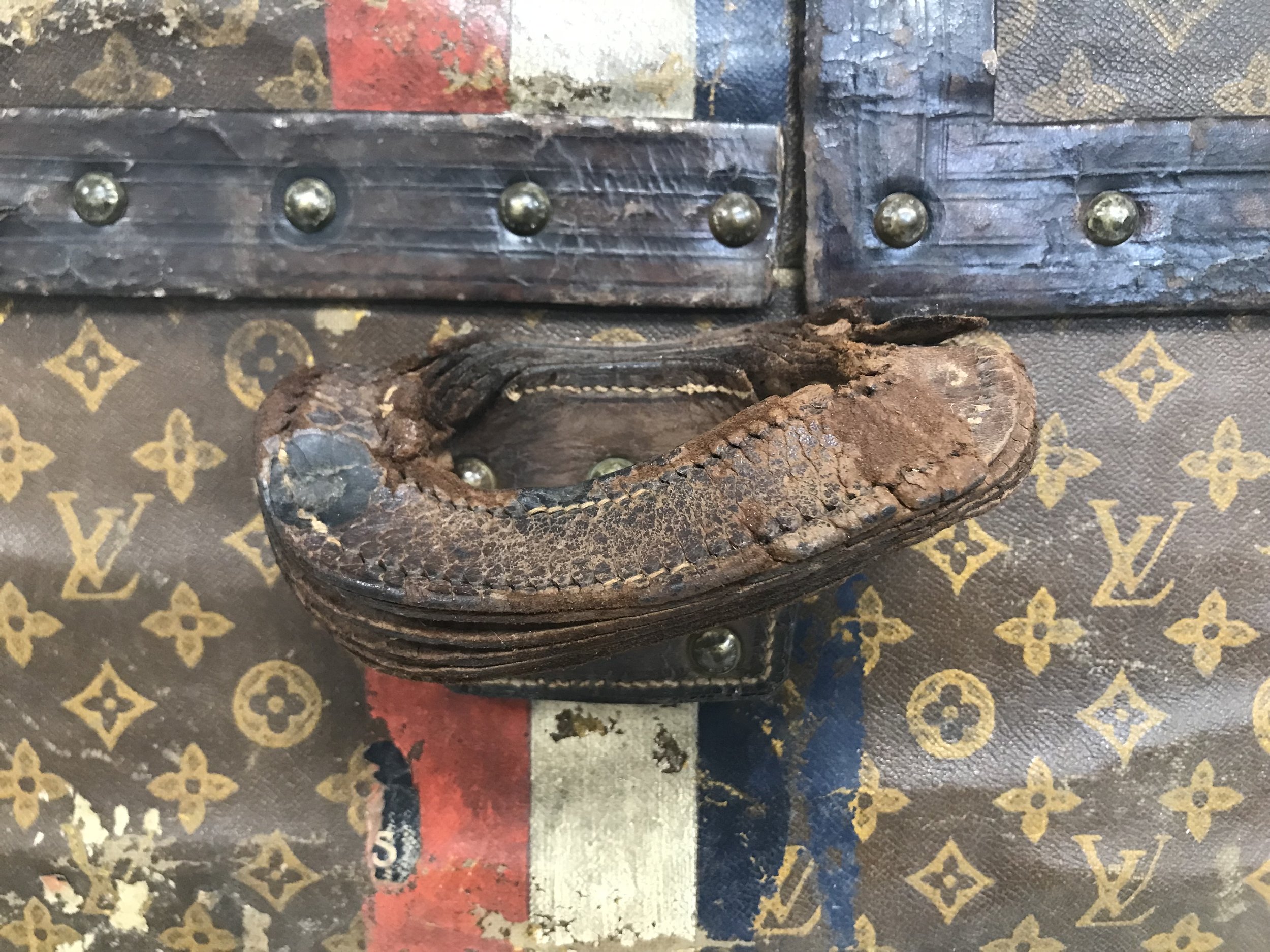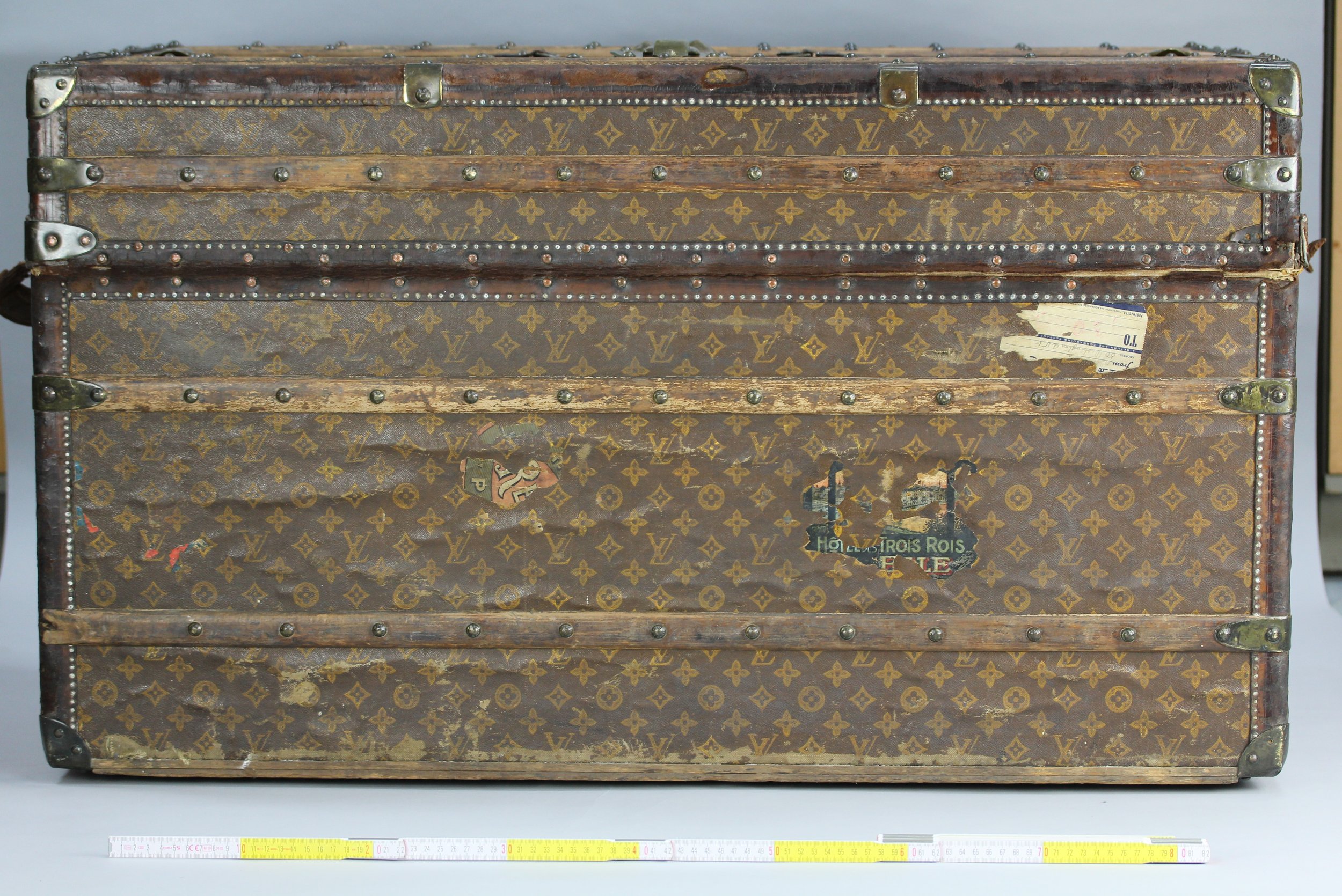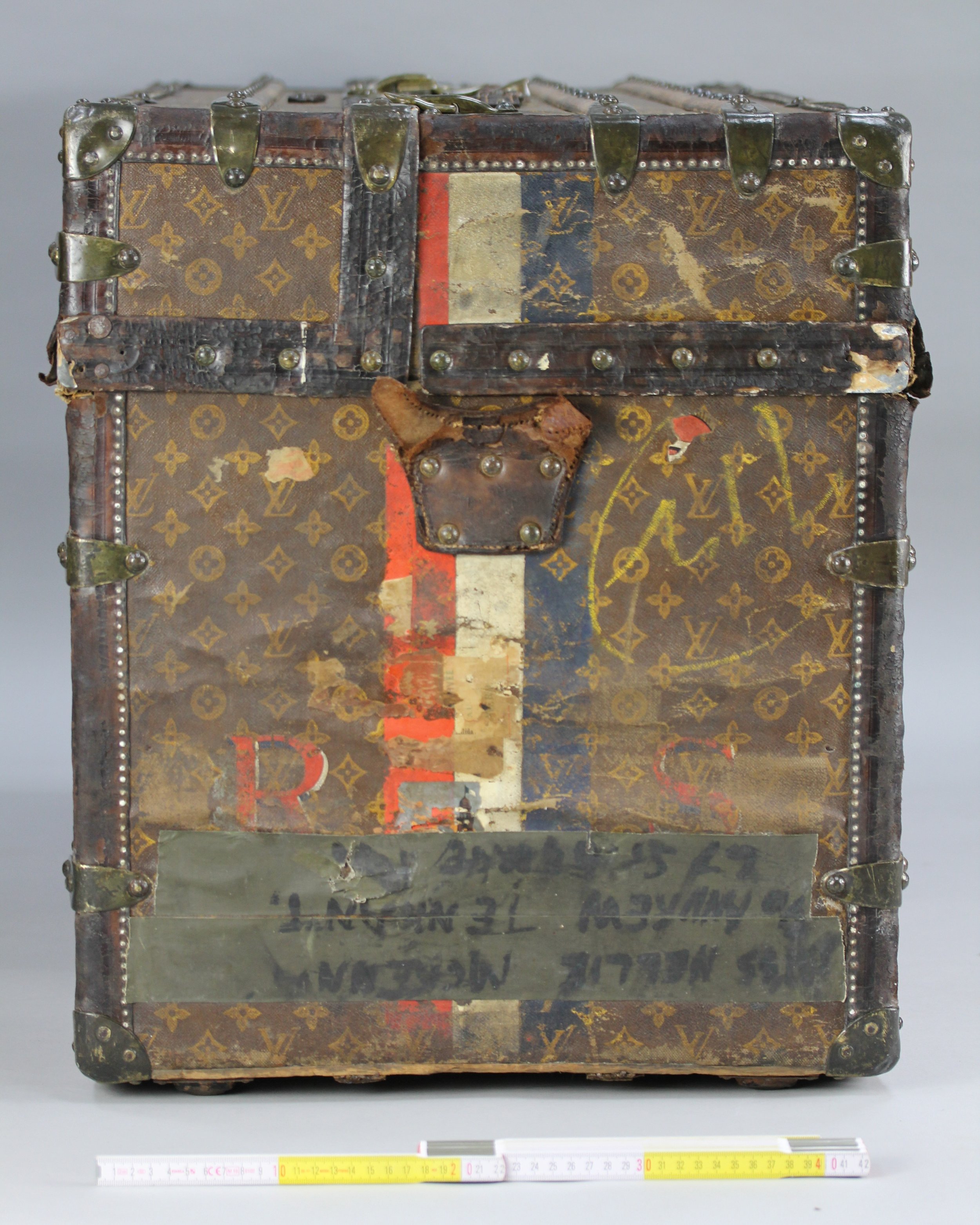Travelling in Style … conserving an important piece of Scotland’s emigration history!
This week I wrapped up treatment on an exciting object… an early 20th century travel trunk designed and manufactured by luxury French Fashion company Louis Vuitton, which was uplifted from the Scottish Maritime Museum in Irvine back in March.
Before being donated to the Museum in 2010, the trunk had lived quite an eventful life! It belonged to the McKenna family, who emigrated from Scotland to New York in the 1920’s, and was used to carry the belongings of family members spanning several different generations back and forth across the Atlantic. Many of these journeys are evidenced by the paper labels adhered to the trunks exterior, some of which are well preserved.
In its later life back in Scotland, it was used to transport belongings around the country by the family, before spending some time in the theatre as a stage prop in James Bridie’s play “The Anatomist”.
This object serves as a fascinating piece of Scotland’s immigration/emigration history, and as such it is set to be part of an exhibition opening at the Maritime Museum later this year, so senior curator, Abigail McIntyre, put in a request for conservation to ensure that it was in the best possible condition before installation of this exhibition began.
Above: Before Treatment
After completing an initial conservation assessment of the trunk, I ran into my first hurdle….. the lid was locked, and there was no key! After some research, and gentle prodding, I determined that the trunk was fitted with a warded lock, which means that there are a series of metal wards (or obstructions) inside. These prevent the lock from being opened unless a key with the correct notches and slots corresponding to these obstructions is used.
Further inspection of the lock revealed that the lower portion of the lock plate was beginning to lift from the front portion of the lid, where a previous repair had failed. It was decided that in order to access the interior of the trunk and secure this portion of the lock plate in place, it would be best to remove it altogether; this way the lock could be accessed, taken apart, and the interior components cleaned, and then fitted back together unlocked and reattached to the trunk (see images below).
Above, left to right: Before and after treatment, lock interior
With the lock problem solved and the interior of the trunk now assessed, I moved onto reducing the corrosion on the metal components, most of which are cuprous, meaning copper alloyed with other metals, and were exhibiting significant amounts of copper corrosion. I began by using a scalpel and glass bristle brushes to reduce the heavier corrosion; I then moved to using swabs made from fine grade wire wool lightly moistened with industrial methylated spirits (IMS). My goal was to remove the corrosion, while still retaining the tarnish, so that the appearance would be consistent with the age of the trunk. The wire wool swabs were perfect for this job, as they allowed me to appropriately control the abrasive action and pressure to remove the corrosion, while avoiding removing too much of the tarnish or scratching the metal surface. After the corrosion was reduced, I applied two coats of microcrystalline wax to all of the cuprous metal components to protect against future corrosion.
Above, left to right: Before and after treatment, metal lock
Next I moved onto cleaning the painted textile covering the exterior of the trunk, and the textile lining the interior of the trunk. Following a dry clean with a Museum Vac, I solvent cleaned the exterior surface using low concentrations of Vulpex, a conservation grade cleaning agent, in deionized water. This made such a difference to the painted decoration, and revealed so much of the yellow monogrammed detail.
Cleaning the interior surfaces of the trunk proved to be a little trickier, as much of the textile lining had been backed with layers of paper, which was extremely degraded, and was beginning to separate from the carcass of the trunk. Following a very gentle clean with the Museum Vac, I proceeded to reattach the paper and textile layers to the base of the trunk using 3% Klucel G (hydroxypropyl cellulose) in ethanol. I then reattached the textile lining the lid compartments using Beva® 371 lined with silk crepeline, and activated with a heat tool.
Above left to right: Solvent cleaning the exterior, and reattaching the interior textile lining with Beva film
The final portion of the treatment was to consolidate the leather trim, which was in bad condition and friable in several areas, and to rebuild the leather handle on the proper left side of the trunk, which was torn completely along one edge and badly misshapen. I began by humidifying the handle to coax the leather layers back into position; I then used silk crepeline and Japanese tissue tinted with watercolors to reattach each layer with polyvinyl acrylic (PVA) adhesive. The leather trim was then consolidated with Klucel G in isopropyl alcohol, and any areas that were at risk of loss were backed with Japanese tissue and PVA.
All that remained was to reattach the lock plate to the trunk lid, which was done with 50% Paraloid B-72 in acetone, and then it was ready to make its final trip back to the Museum in Irvine!
Above, left to right: Leather handle before, and after treatment
This treatment has been extremely rewarding, but due to the composite nature of the trunk, and the fact that it arrived in the lab locked and with no key, it has at times been quite challenging! But I have learnt so much while working on this object (including lock picking!) and my skills as a conservator have improved along the way; I am so excited to see it on exhibition at the Scottish Maritime Museum later this year.
To read more about the exciting collections and upcoming exhibitions at the Scottish Maritime Museum, follow the link below!
Home - Scottish Maritime Museum
After Treatment

